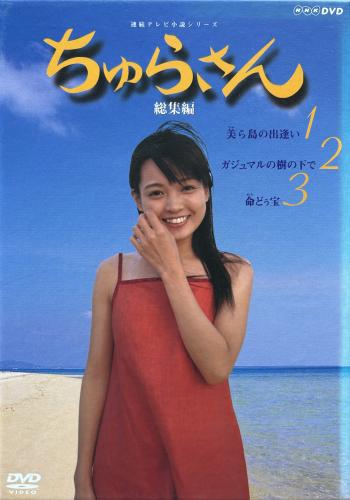Issue:
April 2024
For all its faults, the NHK drama Churasan at least showed people there is a better way to live

Starting in April, Japan’s public broadcaster NHK will be running a repeat of one of their most popular TV morning drama series, Churasan. Originally shown in 2001, Churasan became one of the most loved of all these regular series that consist of daily 15-minute episodes stretched over six months.
Churasan was the first of the morning dramas to heavily feature the Ryukyu Islands, as it focused on the fortunes of a family from the small Yaeyama island of Kohama. The life of daughter Eri provides the main storyline and there are many scenes set in Kohama, the island where she grows up, and then later in Naha and Tokyo.
At the time of its first showing, I was living in Mie Prefecture but already immersing myself in Okinawan music and becoming ever more intrigued by the history, culture, cuisine (and awamori) of the Ryukyus. I was a regular visitor, not just to Okinawa but also to the Miyako and Yaeyama islands, and once ventured as far as Yonaguni on a ship that rolled perilously amid rising waves on a three-and-a-half-hour voyage from Ishigaki, pursued by a typhoon.
Of course I lapped up Churasan as well, and even bought the three-disc box set when it came out later … paid for by my university research allowance.
Now it is 23 years later, and I’ve been a resident of Okinawa for the past 15 of those years. With news of Churasan on TV again, I thought I’d dig out that DVD box and see how it stands up (or falls) today. Of course, the entire series is much too long for three discs, so what we get is more of a “greatest hits”, trimmed to under four hours and focused on protagonist Eri at the expense of much of the filler and subplots involving other characters.
The first shock is just how stereotypical of Okinawa the whole show is. The late Tomi Taira appears throughout as Eri’s grandmother and spends an enormous amount of time gurning or pulling exaggerated faces while spouting wise advice and many platitudes about Okinawa.
We are reminded that life is the treasure (nuchi du takara) and that everything will turn out fine (nankuru naisa) while being shown the beautiful island scenery about which everyone frequently speaks in awe. Eri’s father just loves playing the sanshin at all hours of the day and night, and the family are naturally nourished on traditional Okinawan food. In general, the male characters are treated more indulgently, however lazy, or downright deceitful they may be. Meanwhile, the Okinawan women must just work hard, and look after the men.
Paradoxically, once our heroine moves to Tokyo, things begin to improve, and the drama becomes more interesting with the introduction of new characters (including Miho Kanno who became a favourite of mine with her later work). Many of the cast are Japanese, not Okinawan, thus causing potential “lack of authenticity” problems, but for me this was not a concern. Neither was the absence of any discussion of Okinawan issues such as the unfair presence of U.S. military bases.
This is because Churasan is basically a coming-of-age drama, as well as a love story that just happens to emanate from the Ryukyus. If judged on these terms it does its job very well. Ryoko Kuninaka who plays Eri (and is from Okinawa) excels in the main role. The incidental music, and the theme song, Best Friend by Okinawan duo Kiroro, also serve the drama very well.
More than two decades on, the Yaeyama islands are now under threat, as are many of the other islands, from the imposition of Japanese self-defence force bases, as well as the continued occupation of large swathes of Okinawa’s main island by the U.S. military against the will of most Okinawan people. Japan’s government moves even further to the right as it uses any excuse to build up armed forces on the islands, making them even more of a target for perceived outside threats.
In 2022, NHK TV returned to Okinawa for its morning drama series produced to commemorate the 50th anniversary of Okinawa’s reversion to Japan. This was the dismal Chimu Dondon. Lacking any of the charm of Churasan, it was again full of stereotypes and, although set at the time of reversion and thereafter, it missed a golden opportunity to even hint at any of its disastrous outcomes for local people.
The peaceful relaxed lifestyle of the Okinawan people presented in Churasan may have been an idealised one, but it was nevertheless strongly rooted in truth. As time passes, it is in more danger than ever of disappearing. For all its detractors, Churasan was able at the very least to demonstrate to Japanese that there is a better way to live. This was and remains a great part of its lasting appeal.
John Potter is a professor (retired) at Kogakkan University, Mie Prefecture, and now lives in Okinawa. He is the author of The Power of Okinawa, about the region’s music.

